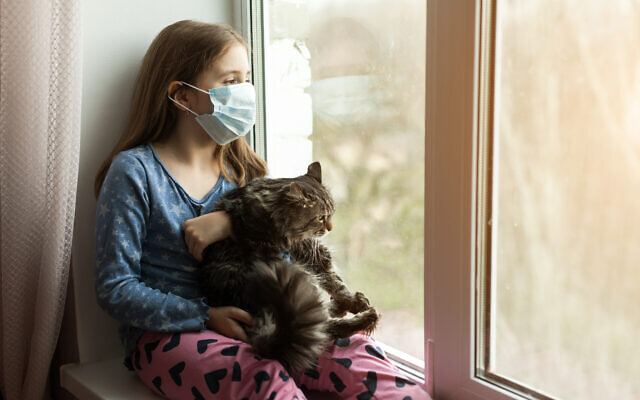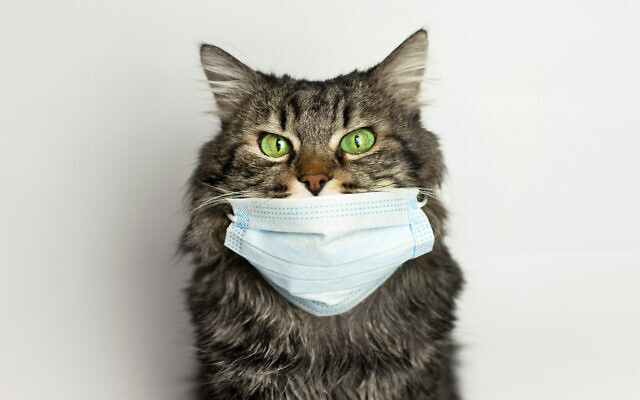Cats Large and Small Can Contract COVID-19
STORY DEVELOPMENTS: April 23, 2020 5:34 p.m. Cats in New York are first pets with virus in U.S. and four more tigers and three lions have tested positive for coronavirus.
UPDATED: April 23, 2020 5:34 p.m.
On Wednesday, April 22, the Center for Disease Control and the National Veterinary Services Laboratory reported the first cases of COVID-19 in two pet cats in New York. They are the first pets in the United States to test positive.
Family pets are not considered a danger in transmitting the COVID-19 virus to human. Responding to the CDC and federal animal lab announcement, the American Veterinary Medical Association said in a press release, “Currently we have no information that suggests that pets might be a source of infection for people with the coronavirus that causes COVID-19.”
Also Wednesday, the New York zoo announced that four more tigers and three lions have tested positive for coronavirus.

Cat owners who’ve tested positive for COVID-19 and are in self-quarantine may want to avoid cuddling up to the family cat. Based on very limited evidence from public health researchers there is a danger that household pets, particularly cats, can be infected by their owners. But there’s no evidence, at present, that the cats with an active infection can pass it to humans.
According to Dr. Robert Schick, a veterinary specialist at the BluePearl Pet Hospital in Sandy Springs, the family cat may want to think twice about getting close.
“If you have the COVID-19 virus,” he said, “it is your cat who should be worried.”
The results of research released on March 31 at the Harbin Veterinary Research Institute in northern China showed that when five cats were given large dozes of COVID-19, six days later they had the virus in their upper respiratory system.
When three of the infected cats were put in a cage with uninfected felines, they infected at least one of them. The report prompted the World Health Organization to take a closer look at the relationship between human, animals and the virus.
In a widely reported incident on April 6, a four-year old Malayan tiger at the Bronx Zoo in New York City was shown to have COVID-19. The zoo, which has been closed to the public since mid-March, announced that the animal had apparently contracted the disease from a zookeeper who tested positive. Additionally, the tiger’s sister, two Amur tigers and three African lions also showed symptoms.
In response to the report from the New York zoo, the director of the Zoo Atlanta, Raymond King, was quick to reassure the public that there was no evidence that any zoo animals here have been infected.
Nonetheless, the Atlanta zoo, which has been closed to the public since March 14, stepped up measures to protect their big cats from infection by the zoo staff.
“We have put in place additional preventative measures such as Personal Protective Equipment for team members working with our large cats, similar to what the teams always do when working with the non-human primates,” a written statement noted last week.
According to researchers, the reason cats of any size and humans catch the coronavirus is because both have similar receptor cells in their respiratory tracts. The virus gets inside those cells and infects them, and the infected cells replicate.
A report from the British Veterinary Association found that cats can also act as fomites, a scientific term which described how the virus can linger on the fur of cats who have been exposed to people with an active infection. Even though the cat is not infected, the virus can be transmitted when they are petted in this way. The danger of touching a cat with the virus on its fur is thought to be the same as when the virus lingers on doorknobs or grocery shopping carts.
At the BluePearl in Sandy Springs, an emergency clinic that serves the public 24/7 as well as being a specialized treatment center, extraordinary precautions have been taken to protect the staff and doctors.
According to Dr. Schick, animal owners must remain in their automobile, in an assigned parking space when bringing in an animal for treatment. Everyone who works in the building wears protective clothing, and if an animal is coming from a home where there is a coronavirus infection, the animal is bathed in a special solution and isolated.
When Dr. Schick has to meet with the owners in a treatment room, there’s a barrier between him and the animals’ owners.
“We do have a setup where we have a plastic shower curtain from my house, actually, believe it or not,” he said. “The animal is one side of the exam table. On the other side, the shower curtain, between us and the owners.”
The U.S. Department of Agriculture Animal and Plant Health Inspection Service on April 6 noted that those sick with the virus should avoid contact with their pets just as they would other people.
“It is still recommended that people sick with COVID-19 limit contact with animals until more information is known about the virus,” the advisory stated. “When possible, have another member of your household care for your animals while you are sick. If you are sick with COVID-19, avoid contact with your pet, including petting, snuggling, being kissed or licked, and sharing food. If you must care for your pet or be around animals while you are sick, wash your hands before and after you interact with pets.”




comments